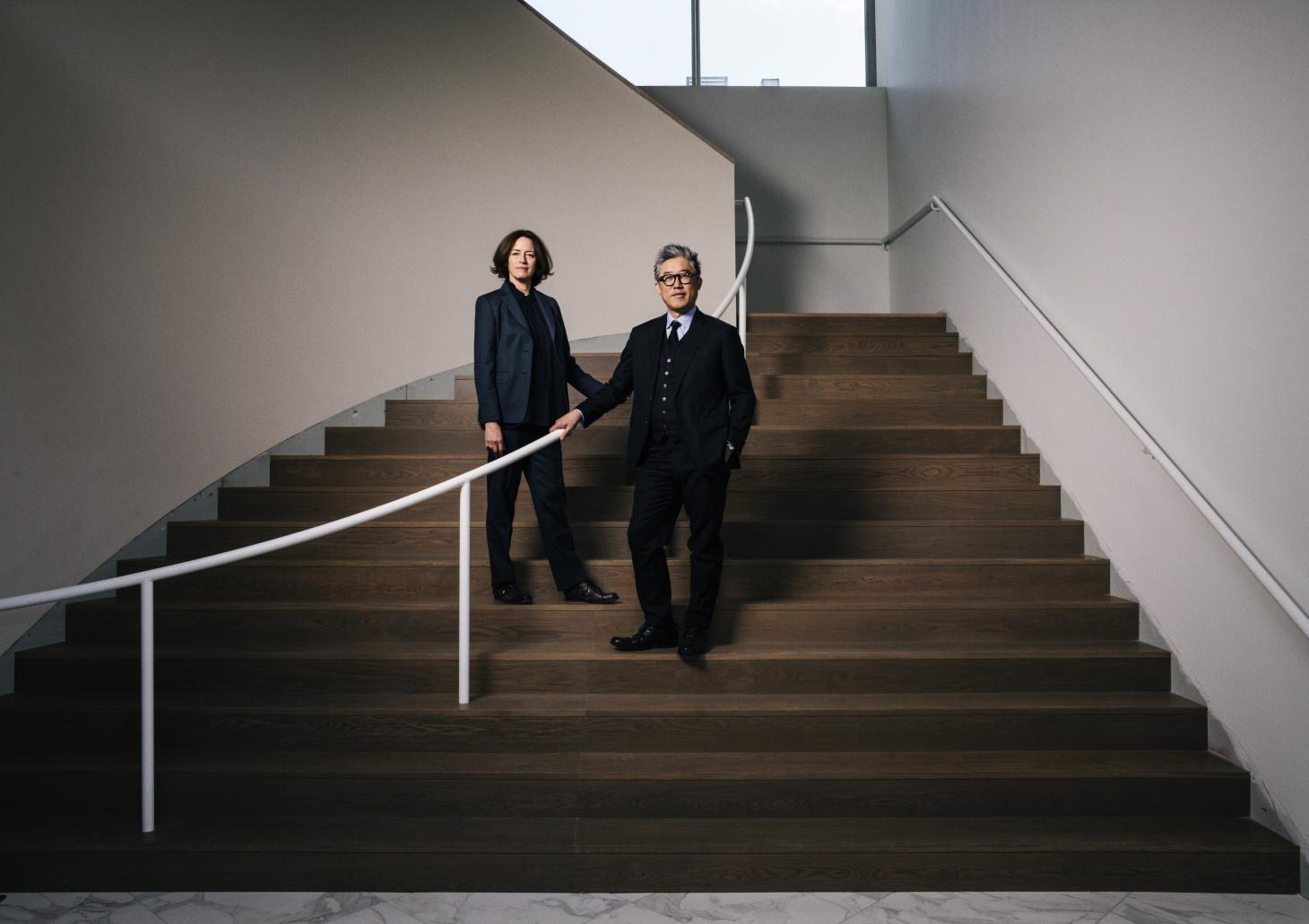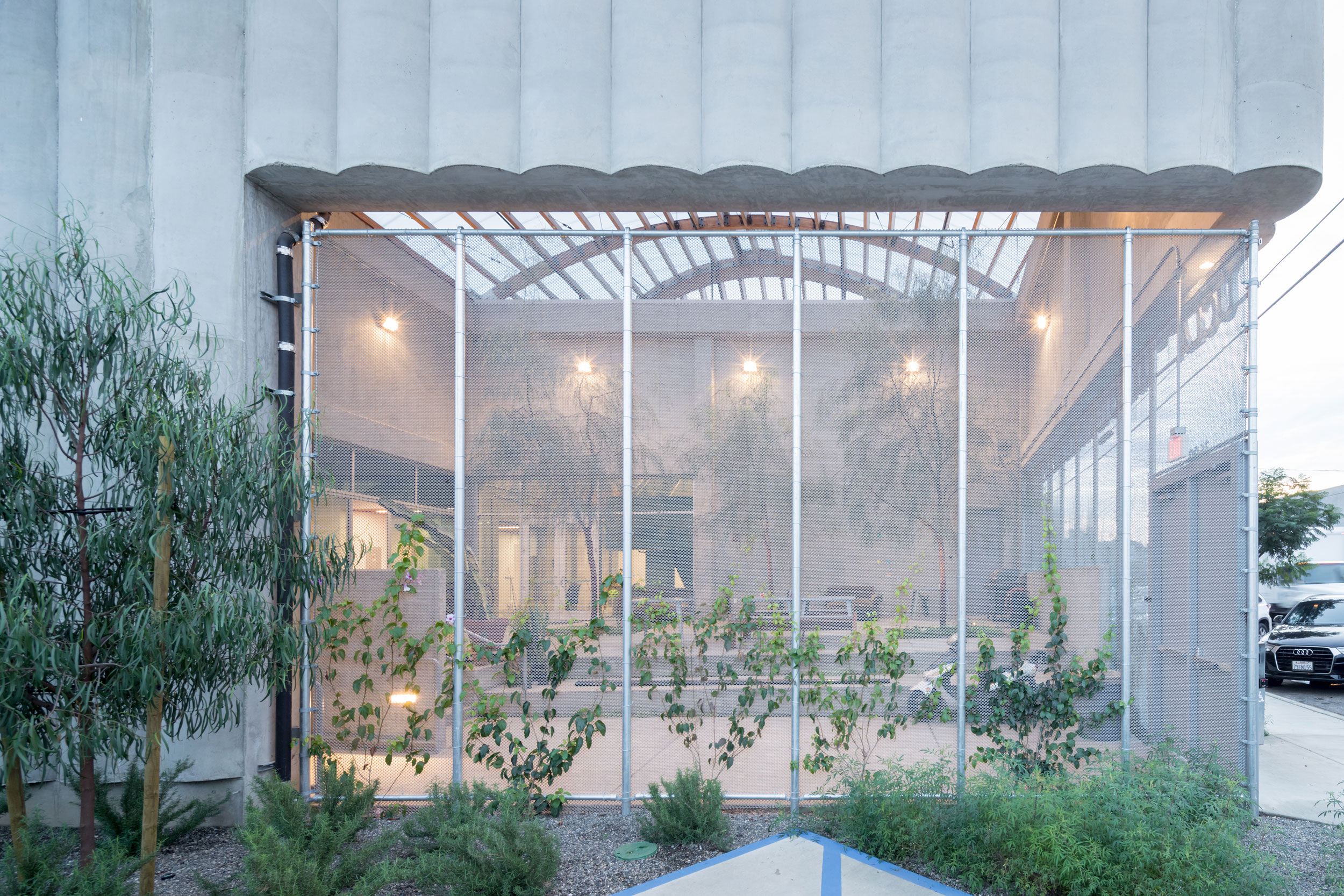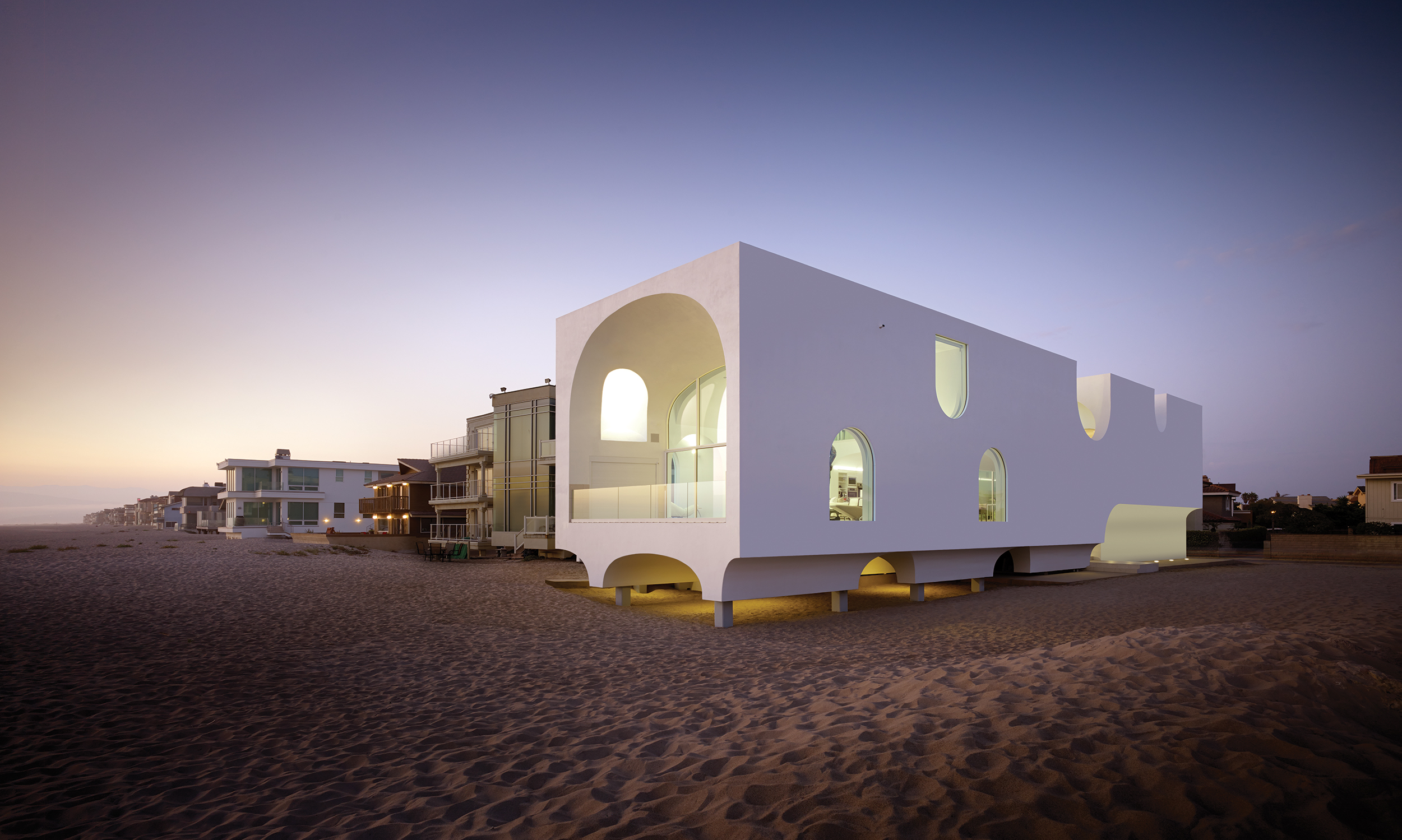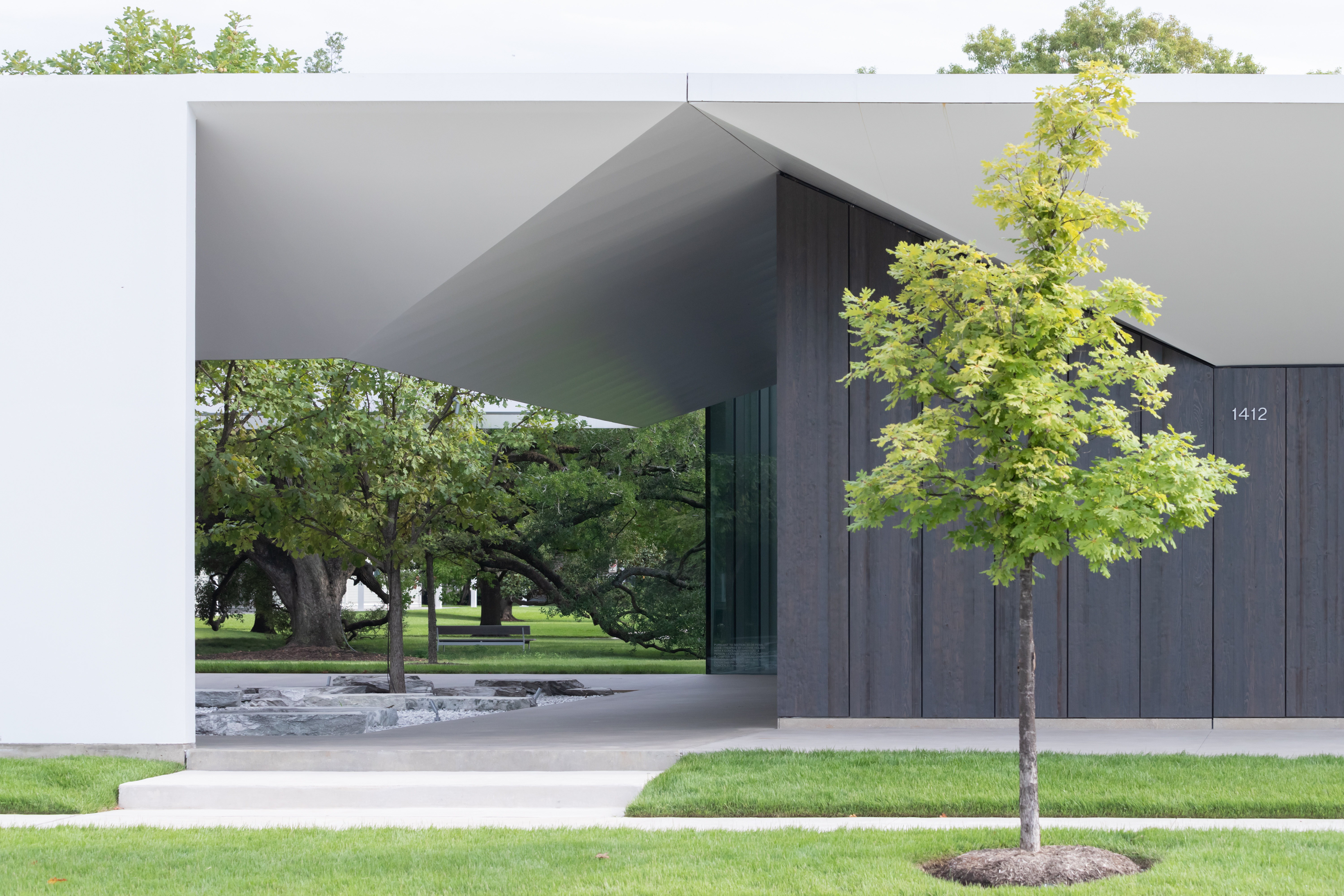At home with Sharon Johnston
American Architect Sharon Johnston talks to us about where and how she works best, plus solitary paddleboarding, meditative dog-walking, and life and design on her home turf in California

Architects Sharon Johnston and Mark Lee set up Los Angeles-based studio Johnston Marklee in 1998. The husband-and-wife team started off as a calm, quiet force in the architecture world – a best-kept secret from California, if you will – but steadily rose to global prominence through their sharp eye for detail and artistic interpretation of form and volume. At the same time, the team's work remains functional, flowing and powerfully architectural – spaces for living and experiencing. Vault House, a beachside home in Oxnard, was one of the projects that propelled them to fame, and also scooped a Wallpaper* Design Award in the Best New Private House category in 2015. More cultural, residential and commercial work ensued, with prestigious commissions such as the Menil Drawing Institute, UCLA Margo Leavin graduate art studios and Pacific Palisades house completing in quick succession over a few years. And there's more to come from this dynamic, creative practice.
We caught up with Sharon Johnston to discuss architecture, materials and her home territory – California.

Sharon Johnston and her partner, Mark Lee, shot at the Museum of Contemporary Art Chicago for the October 2017 issue of Wallpaper*.
At home with Sharon Johnston
W*: Where are you at the moment? What can you see?
SJ: I am in Los Angeles, along the coast looking out over the Pacific Ocean. I grew up in this region and there is something palpable about being at the edge of a continent, at the threshold of land and sea, where things change moment to moment in the skies and at the tidal edge. It reminds me of how ephemeral everything is. I think this dynamic ecology of the coast informs our work in many ways: a focus on thresholds and edges, daylight and fluid climatic conditions, and the malleability and flexibility of space evident in the most resilient works of architecture.
W*: What’s the last phone call you made?
SJ: The last phone call I made was to my partner Mark Lee. We both tend to be on the road or on opposite coasts, so the phone is our lifeline. Happily, we were talking about planning a vacation to Oaxaca to celebrate with some friends – a rare occurrence for us and a much-needed getaway.

UCLA Margo Leavin graduate art studios.
W*: The last object you lost? Will you replace it?
SJ: I prefer to think about my recent lost piece of jewellery – a ring – as temporarily misplaced. This happens from time to time… Something may be out of my hands for a while, but often is rediscovered at an unexpected moment. This was a special piece made by a dear friend and as I continue to weigh whether to wait for it to reappear or imagine commissioning another piece, I think about the time that has passed, what has changed and how would I bring a ‘replacement’ back into my collection in a new way. I don’t have the answer yet.
W*: Where and when do you find you are most productive?
SJ: I find that different spaces are best suited for specific kinds of work, so I tend to move around a lot. Living through the pandemic has certainly amplified this kind of practice. For our first extra-large creative workplace project – the San Francisco HQ for Dropbox – we spent a lot of time thinking about the future of work. We concluded that in many ways work models in the future are unknowable, but what is certain is that creative work is not a one-size- fits-all environment, so we designed a kit of parts – flexible components, assemblies, and spatial typologies – to accommodate all kinds of work habits. Inspiration came from a range of environments, from domestic spaces inspired by the comforts of home, to the open-ended work-a-day informality of the artist’s studio.
I like to work for an hour or so at home early in the morning to watch the sunrise and enjoy that quiet transition in the day. I move between libraries and lounges in our office between meetings and find myself spending less and less time at one desk. And I get outside as much as I can to walk and think and get a bit lost in the flow of the city.
Receive our daily digest of inspiration, escapism and design stories from around the world direct to your inbox.

Vault House, California.
W*: Favourite place, anywhere in the world? And why?
SJ: I love to travel and have many places on my list of new places to discover. I love visiting new cities and those I know well again and again, like Manhattan. And on the other hand, there is nothing better than a solitary paddleboard trip up a river on the north shore of Kauai. But still, my favorite place is Southern California because it has everything: the beach, the mountains, city centres and everything in between. I used to have more time to explore the city, find new places to eat, shop, hike, or discover new galleries. I still love the occasional new discovery, often just an hour or two before or after a meeting, when I can lose myself in a new corner of the city – this always gives me a new lens to see the city all over again as if for the first time.
W*: What’s the one thing (in your creative field) you wish you had designed or invented?
SJ: One piece, as part of a larger collection that I really admire, is the Aalto ‘Stool 60’ from Artek. The technology of the L-leg involves bending the birch through steaming to make it malleable before slicing it and inserting new thin veneer strips to strengthen and fix the curved profile. The versatility of the piece, as it has subsequently inspired so many other variations of chairs and tables, is remarkable. Our studio is full of ‘Stool 60’s; they look at home with every other piece of furniture in our office, both contract and collectible pieces. An extra-special detail is that they look so sculptural in a spiral array when they are stacked. And as a testament to its classic style, new artistic collaborations and editions of the stool continue to arrive on the market.

Dropbox headquarters.
W*: How do you switch off? Do you switch off?
SJ: I find it very hard to switch off – for me it’s more of a switch to a different channel. Growing up and living within the different ecologies of Southern California, I am always drawn to get outside and walk, at the beach or in the mountains, or to discover some part of the city I don’t know well. My dogs are often with me, and it’s amazing what kind of conversations can ensue. Mark recently brought home a special new book, Seeing Gertrude Stein: Five Stories, by Wanda M Corn, one of my former professors at Stanford, and Tirza True Latimer. Stein coined the term ‘Basketing’ (Basket was the name of her white Standard Poodle) to describe ‘a new form of meditation in the company of her dog’. As Stein describes, ‘The steady, rhythmic movement of walking with the dog allows her to become aware of herself in new ways.’ No one could describe the benefits of this daily ritual more eloquently and precisely than Stein.
W*: Favourite material to work with and why?
SJ: I am fascinated by wood for so many reasons. Its grain and texture mark time; it is one of the most sustainable materials to work with if harvested responsibly, and it is a remarkably malleable material that can reflect so many different qualities through its machining or handcrafting. We make material decisions that are integral to the formal and spatial qualities of each building. For the Menil Drawing Institute, a building to house delicate works on paper, we clad the building in wide engineered boards of Port Orford cedar. The wood is light, strong, fine-grained, and aromatic, which makes it insect-resistant. We developed a finish for the wood together with a special wood manufacturer in Washington, the GR Plume Company, where we blasted the wood to bring out the grain topography and then oiled the planks for a dark silvery finish, so it resembles petrified wood. For a current residential project in Montana, we are developing a wood-cladding concept with western red cedar that celebrates the weathering of the wood in different cycles according to orientation, installation, and sealing treatments, marking time in another way.

Menil Drawing Institute.
W*: What one piece of advice would you give the next generation?
SJ: An architect’s career is long and winding, and as I reflect on over 20 years of practice – what seeds were sown and what has blossomed – I think about the relationships that support and expand how and where one discovers opportunities to design. I think taking it slow, being intentional with your output, and building the foundations of a career are still essential for longevity. Building a community of like-minded colleagues and collaborators to exchange ideas through projects, exhibitions, or teaching is also vital to cultivating a sustained practice. I find that having a supportive community helps bring more voices to the table which are intentional, direct, and collaborative and all essential to creative practice.
W*: What’s been your biggest failure and what did it teach you?
SJ: Practising architects must manage complex and difficult work, and I view our career as a continuous learning experience – dead ends, lost projects, and failures are meaningless unless you can learn from them and put that knowledge to work in the context of future opportunities. We try to keep our eye on what brings coherence to our growing body of work and commit to the continuous practice of contextualising our ideas from both winning schemes and failed projects. Distilling distinct lineage between projects keeps ideas alive and ready to be deployed for that project where concept and circumstance are aligned. In contrast to a model of accelerated growth, we feel an affinity to architects of our generation who march forward at their own pace. We are not on the fast track but pursue our architectural interests with persistence and consistency.

Menil Drawing Institute.
W*: Who is your dream collaborator?
SJ: We have collaborated with so many amazing designers, engineers, artists, and writers in our career, and this mode of engagement is core to our practice. More than a singular person, I am inspired by the energy of the pluralistic and collaborative voices that are challenging expected systems of practice and participation today. So many dynamic creatives across generations and regions of the world are teaming up to find meaningful ways to bring diversity and richness to design conversations. This is exciting as it offers up new collective models which disperse traditional structures of power, frameworks to view history, and will illuminate new models of decision-making in the future.
INFORMATION
Ellie Stathaki is the Architecture & Environment Director at Wallpaper*. She trained as an architect at the Aristotle University of Thessaloniki in Greece and studied architectural history at the Bartlett in London. Now an established journalist, she has been a member of the Wallpaper* team since 2006, visiting buildings across the globe and interviewing leading architects such as Tadao Ando and Rem Koolhaas. Ellie has also taken part in judging panels, moderated events, curated shows and contributed in books, such as The Contemporary House (Thames & Hudson, 2018), Glenn Sestig Architecture Diary (2020) and House London (2022).
-
 Year in review: the shape of mobility to come in our list of the top 10 concept cars of 2025
Year in review: the shape of mobility to come in our list of the top 10 concept cars of 2025Concept cars remain hugely popular ways to stoke interest in innovation and future forms. Here are our ten best conceptual visions from 2025
-
 These Guadalajara architects mix modernism with traditional local materials and craft
These Guadalajara architects mix modernism with traditional local materials and craftGuadalajara architects Laura Barba and Luis Aurelio of Barbapiña Arquitectos design drawing on the past to imagine the future
-
 Robert Therrien's largest-ever museum show in Los Angeles is enduringly appealing
Robert Therrien's largest-ever museum show in Los Angeles is enduringly appealing'This is a Story' at The Broad unites 120 of Robert Therrien's sculptures, paintings and works on paper
-
 Step inside this resilient, river-facing cabin for a life with ‘less stuff’
Step inside this resilient, river-facing cabin for a life with ‘less stuff’A tough little cabin designed by architects Wittman Estes, with a big view of the Pacific Northwest's Wenatchee River, is the perfect cosy retreat
-
 Remembering Robert A.M. Stern, an architect who discovered possibility in the past
Remembering Robert A.M. Stern, an architect who discovered possibility in the pastIt's easy to dismiss the late architect as a traditionalist. But Stern was, in fact, a design rebel whose buildings were as distinctly grand and buttoned-up as his chalk-striped suits
-
 Own an early John Lautner, perched in LA’s Echo Park hills
Own an early John Lautner, perched in LA’s Echo Park hillsThe restored and updated Jules Salkin Residence by John Lautner is a unique piece of Californian design heritage, an early private house by the Frank Lloyd Wright acolyte that points to his future iconic status
-
 The Stahl House – an icon of mid-century modernism – is for sale in Los Angeles
The Stahl House – an icon of mid-century modernism – is for sale in Los AngelesAfter 65 years in the hands of the same family, the home, also known as Case Study House #22, has been listed for $25 million
-
 Houston's Ismaili Centre is the most dazzling new building in America. Here's a look inside
Houston's Ismaili Centre is the most dazzling new building in America. Here's a look insideLondon-based architect Farshid Moussavi designed a new building open to all – and in the process, has created a gleaming new monument
-
 Frank Lloyd Wright’s Fountainhead will be opened to the public for the first time
Frank Lloyd Wright’s Fountainhead will be opened to the public for the first timeThe home, a defining example of the architect’s vision for American design, has been acquired by the Mississippi Museum of Art, which will open it to the public, giving visitors the chance to experience Frank Lloyd Wright’s genius firsthand
-
 Clad in terracotta, these new Williamsburg homes blend loft living and an organic feel
Clad in terracotta, these new Williamsburg homes blend loft living and an organic feelThe Williamsburg homes inside 103 Grand Street, designed by Brooklyn-based architects Of Possible, bring together elegant interiors and dramatic outdoor space in a slick, stacked volume
-
 This ethereal Miami residence sprouted out of a wild, jungle-like garden
This ethereal Miami residence sprouted out of a wild, jungle-like gardenA Miami couple tapped local firm Brillhart Architecture to design them a house that merged Florida vernacular, Paul Rudolph and 'too many plants to count’